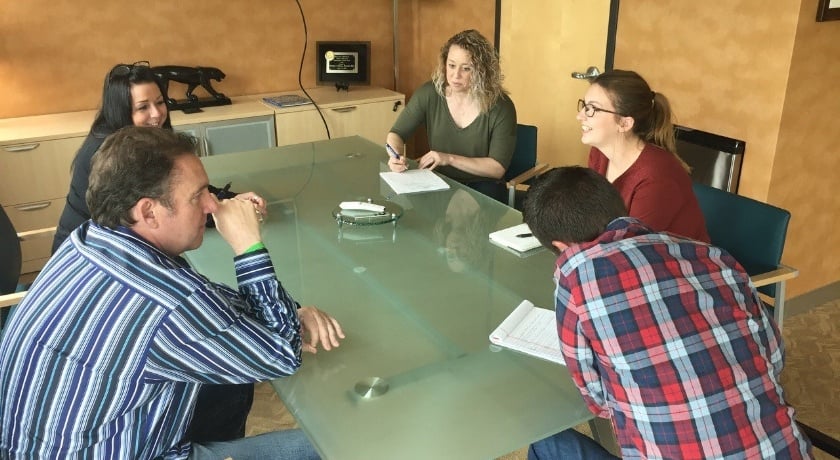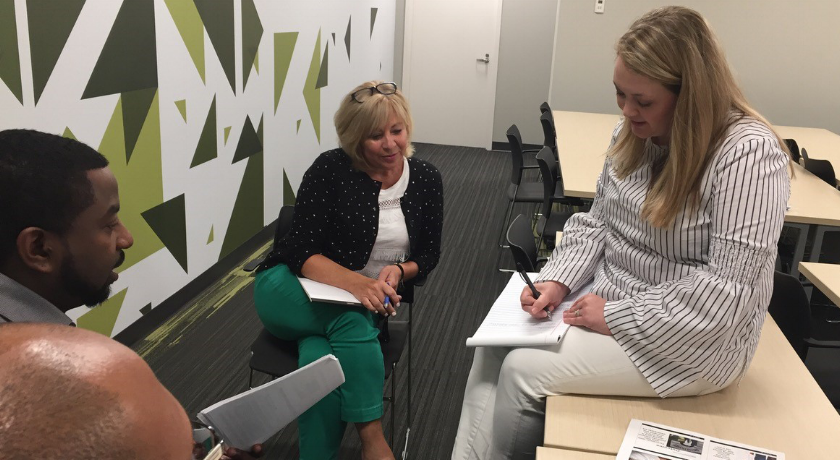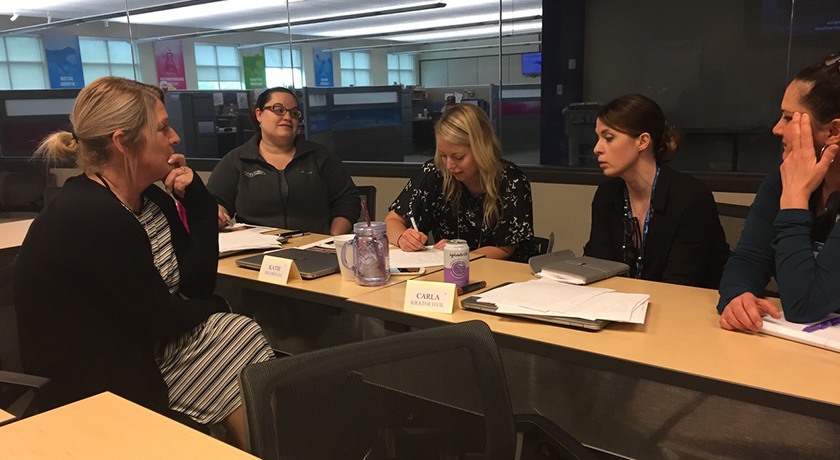D.I.S.C. Explained: An Intro for Corporate Groups
Is your team looking for a behavioral analysis tool to help you work better together? Find out how D.I.S.C. can improve your group’s interpersonal relationships at the office.
Representing four distinct personality traits, D.I.S.C. is a self-assessment resource often used by organizations to help people collaborate more effectively.
D.I.S.C. tests are based on work done by American psychologist Dr. William Moulton Marston, and can help individuals identify their strengths and weaknesses, especially within a team dynamic.
The D.I.S.C. model represents four main quadrants:
- Dominance
- Influence
- Steadiness
- Conscientiousness
Read on to learn how the self-assessment works, what each of the four D.I.S.C. traits mean, and ways this tool can help support your team and, ultimately, your business.
How D.I.S.C. Works
In order to determine where you fall within the four quadrants of the D.I.S.C. profiles, individuals start by taking a quiz. This is a self-assessment test in which you answer a series of questions as honestly as you can about your behaviors.
Your results from the assessment will place you somewhere within the quadrants to showcase which trait most accurately represents you. Keep in mind, however, that it’s possible to land somewhere between multiple different quadrants.
It’s also critical to remember that there is no “ideal” result. Wherever you land is the right place for you. What’s important is that you’re becoming aware of where you are in relation to your colleagues.
What D.I.S.C. Stands For
Here’s what each of the four quadrants represent, how they’re generally perceived, and their strengths and weaknesses.
Dominance
People who are high in “D” tend to be more direct, results-oriented, and strong-willed. They are often motivated by competition, challenges, and opportunities to pursue new things.
Others will often perceive someone with a Dominant profile as confident, determined, and possibly aggressive or demanding.
| STRENGTHS: | WEAKNESSES: |
| Good at taking action | Not detail-oriented |
| Interested in the bottom line | Poor interpersonal skills |
| Prioritizes immediate results | Can become impatient |
Influence
Individuals who lean more towards “I” are often outgoing, enthusiastic, and optimistic. They enjoy working with others and highly value social approval.
Coworkers of Influencers may describe them as warm, popular, and at times flaky.
| STRENGTHS: | WEAKNESSES: |
| A great “team player” | Tends to be impulsive |
| Values relationships | Has difficulty following through |
| Encourages enthusiasm | Lacks organizational skills |
Steadiness
Those who land closer to “S” are generally patient, humble, and tactful. People who rank high in Steadiness really emphasize cooperation and taking a composed approach to their work.
Colleagues of an “S” may say that they are supportive, reliable, but can overthink things and deliberate too long.
| STRENGTHS: | WEAKNESSES: |
| Encourages collaboration | Can be indecisive |
| Provides stability to others | Resistant to change |
| Offers a calming presence | Inability to multitask |
Conscientiousness
People who are closer to the “C” quadrant are generally more analytical, private, and systematic. They strive to continually learn new things, exemplify their skillset, and do their work “right.”
Others may describe someone who is high in Conscientiousness as detail-oriented, diplomatic, and sometimes a bit of a micromanager.
| STRENGTHS: | WEAKNESSES: |
| Values quality and accuracy | Often gets defensive |
| Always evolving and learning | Tends to overthink |
| Independent | Not the best “team player” |
Ways D.I.S.C. Can Help Your Team
So, how can knowing your coworkers’ D.I.S.C. profiles help your business? Here are just a few ways doing the assessment can help you and your team work better together:
- Recognize and appreciate strengths in yourself and your coworkers
- Understand your weaknesses and how they may affect others
- Better understand your colleagues and how they work
- Embrace differences and overcome conflict with positive outcomes
- Improve organizational efficiency by leveraging different profiles
- Build a stronger, more cohesive team dynamic
Learn More About D.I.S.C. in the Workplace
You can also download A Practical Guide to Using D.I.S.C. in the Workplace for expert advice on using D.I.S.C. from Outback’s Lead Skill Development Facilitator, Lyndon Friesen. Simply click the button below for access to your free copy of this all-in-one PDF document.




Comments